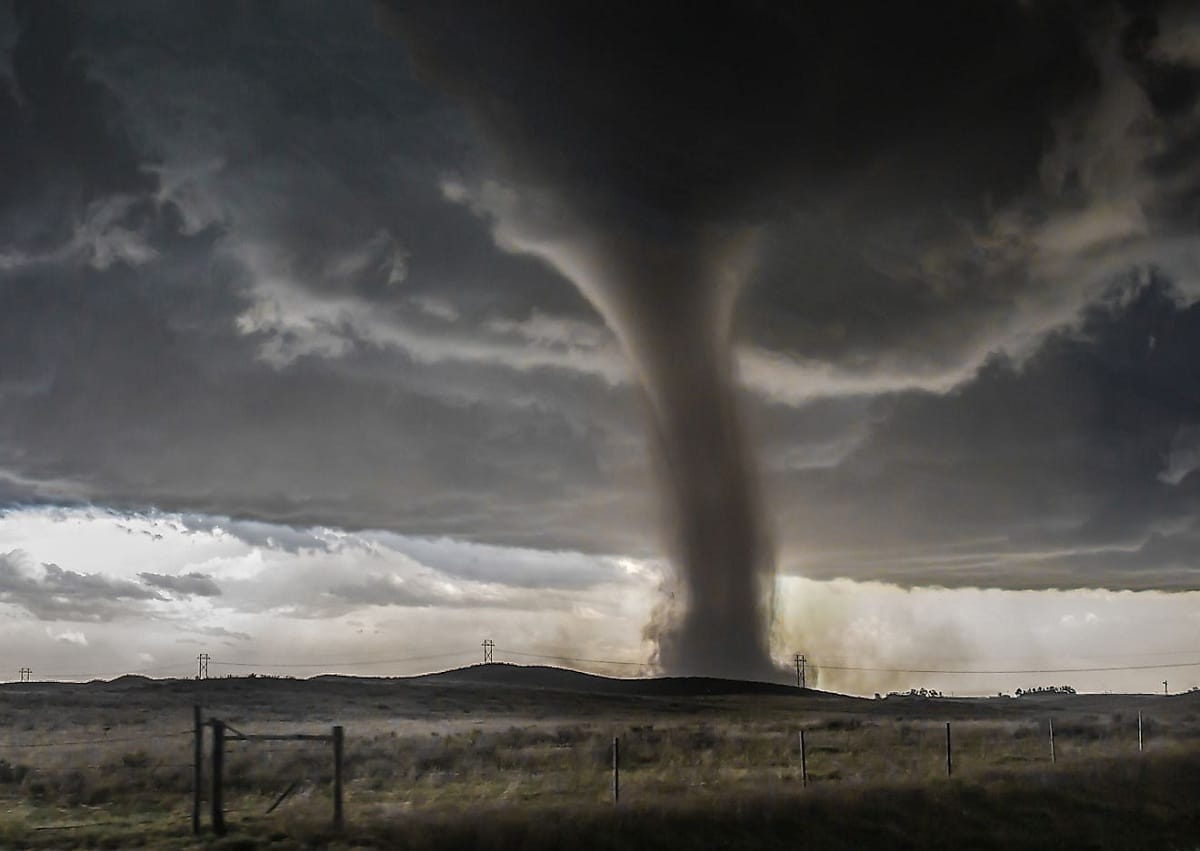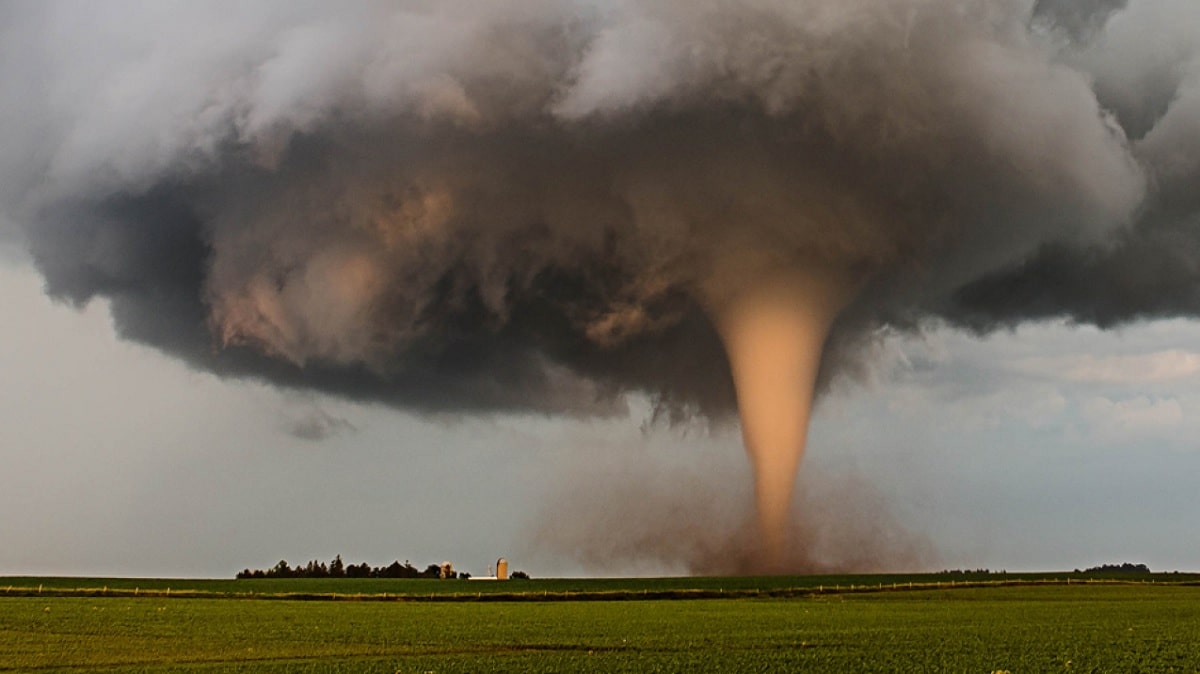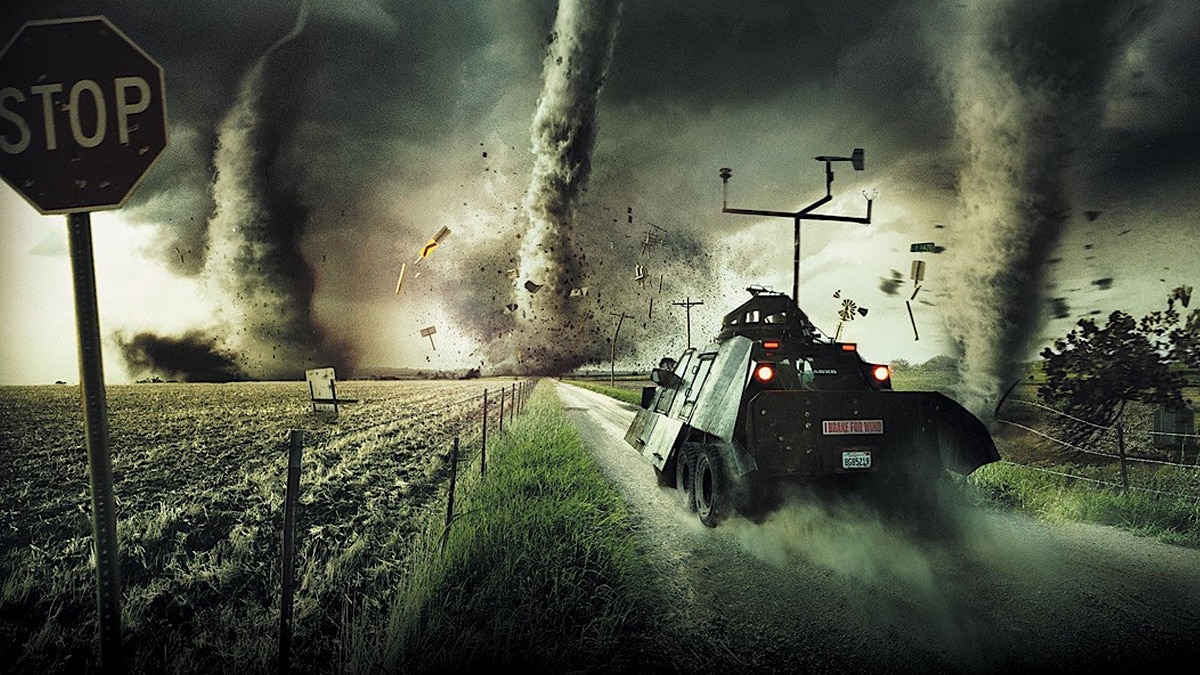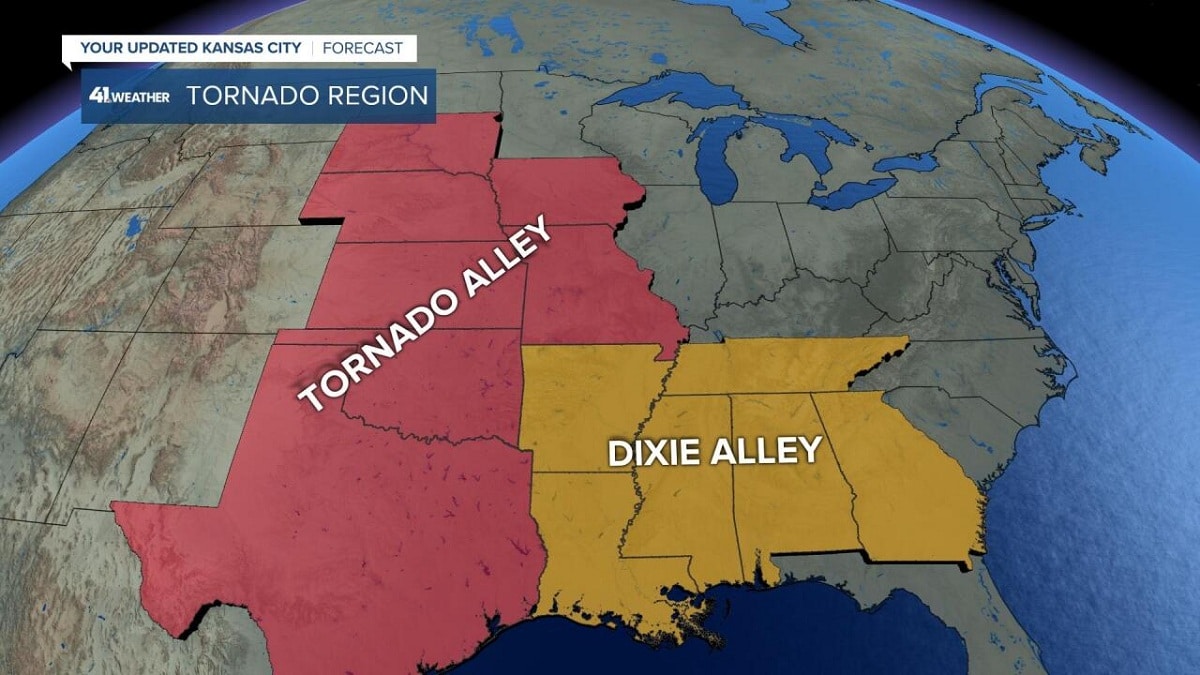
Tornado alley refers to an area in the central United States where tornadoes frequently occur. In the region, tornadoes occur when moist air from the Gulf of Mexico meets cold, dry air from Canada. Although the area described as Tornado Alley has no clear boundaries, it includes the Great Plains states of Texas, Kansas, Oklahoma, Iowa, Nebraska, and South Dakota. Other states that are sometimes included in the tornado zone include Ohio, North Dakota, Arkansas, Montana, and Indiana, among others. Although the region experiences tornadoes throughout the year, most occur in the summer and spring and are often accompanied by thunderstorms.
In this article we are going to tell you everything you need to know about the Alley tornado, what repercussions they have and some main characteristics about tornadoes.
What is a tornado

A tornado is a mass of air that forms with high angular velocity. The ends of the tornado are located between the surface of the Earth and a cumulonimbus cloud. It is a cyclonic atmospheric phenomenon with a large amount of energy, although they usually last a short time.
The tornadoes that are formed can have different sizes and shapes and the time they usually last round between a few seconds and more than an hour. The best known tornado morphology is funnel cloud, whose narrow end touches the ground and is usually surrounded by a cloud that is dragging all the dust and debris around it.
The speed that tornadoes can reach are between 65 and 180 km / h and can be 75 meters wide. Tornadoes do not sit still where they form, but rather move across the territory. They normally travel up to several kilometers before disappearing.
The most extreme can have winds with speeds that can rotate at 450 km / h or more, measure up to 2 km wide and remain touching the ground for more than 100 km of route.
How a tornado form
Tornadoes are born from thunderstorms and are often accompanied by hail. For a tornado to form, conditions of changes in the direction and speed of a storm, creating a rotating effect horizontally. When this effect occurs, a vertical cone is created through which the air rises and rotates within the storm.
The meteorological phenomena that promote the appearance of tornadoes tend to act more during the day than at night (especially at dusk) and in the time of spring and autumn year. This means that a tornado is more likely to form in spring and autumn and during the day, that is, they are more frequent at these times. However, tornadoes can occur at any time of day and on any day of the year.
Where is tornado alley located

Several regions of the United States are prone to tornadoes, including the Gulf Coast, Southern Plains, Upper Midwest, and Northern Plains. However, nearly every state has experienced tornadoes, although storms are frequent between the Appalachian Mountains and the Rocky Mountains in the central United States. The term "tornado corridor" was coined by Captain Robert Miller and Major Ernest Fabush, who incorporated it into a 1952 research project studying severe weather in Oklahoma and Texas.
Although the term refers to an area in the central US where tornadoes are frequent, the National Weather Service has not assigned an official definition for it. Therefore, different locations and regions are always included in Tornado Alley.
Although the boundaries of Tornado Alley vary by origin, covers the Great Plains states of Louisiana, Texas, Iowa, Kansas, South Dakota, Oklahoma, and Nebraska. Some sources include states such as Illinois, Wisconsin, Indiana, western Ohio, and Minnesota as part of Tornado Alley. Tornado Alley can also be defined as the area with the most tornadoes. Some sources also indicate that there are several tornado alleys in addition to the area from Texas to Kansas. These alleys can include the Upper Midwest, Lower Mississippi, Tennessee, and Ohio valleys.
Where is the Alley tornado more frequent

Tornadoes are common in the United States due to warmer weather. Tornadoes can form anywhere in the country and across the North American continent, and the United States experiences about 1200 severe storms each year. Nevertheless, Tornado Alley is one of the areas most affected by tornadoes because most of the conditions required for the storm to form prevail in the area.
Part of the Great Plains, the area is flat and dry, making it an ideal place for competing air masses to meet. Warm air rising from the Gulf of Mexico meets cold, dry winds from the Rocky Mountains. When these competing air masses meet, cold, dry air sinks and warm, moist winds rise, creating a violent storm.
tornado frequency
Texas has experienced the most tornadoes due to its size and location in the far south of the region. However, Kansas reported the most tornado areas in 2007, followed by Oklahoma. Although Florida reported frequent tornadoes in 2013, the storms were not as strong as the southern plains. Florida averaged 12,2 tornadoes per 10.000 square miles per year between 1991 and 2010, making it the state with the most tornadoes per region during that period, followed by Kansas (11,7) and Maryland (9,9). Texas recorded 5,9 tornadoes per unit area per year during the same period.
I hope that with this information you can learn more about the Alley tornado and its characteristics.